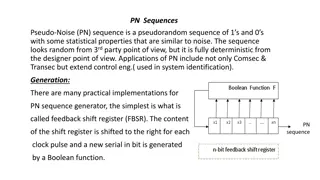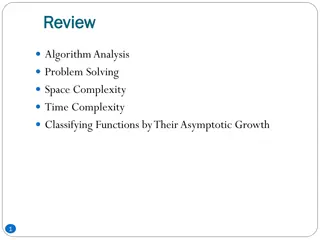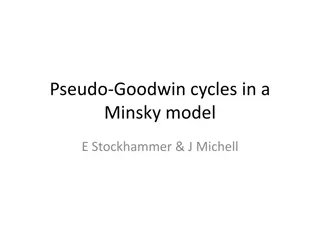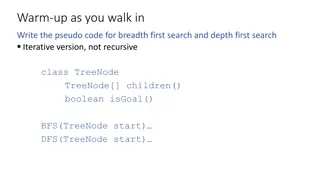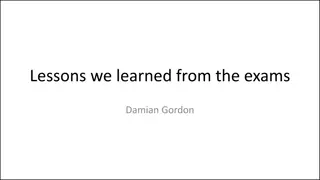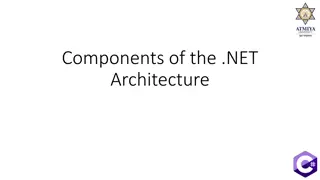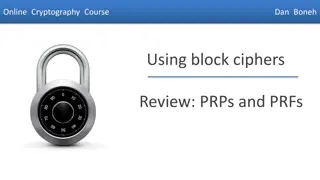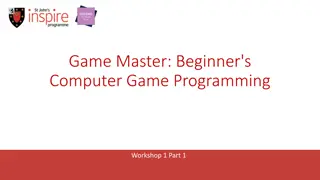Understanding Pseudo Code: A Beginner's Guide to Organizing Programs
Pseudo code is a helpful way to organize your program logic before actual coding. It provides a structured outline from inputs to outputs, focusing on step-by-step guidelines that are not language-specific. This guide covers the basics of pseudo code, including general guidelines, steps to pseudo coding, common tools like variables and loops, and practical problem-solving examples.
Download Presentation

Please find below an Image/Link to download the presentation.
The content on the website is provided AS IS for your information and personal use only. It may not be sold, licensed, or shared on other websites without obtaining consent from the author. Download presentation by click this link. If you encounter any issues during the download, it is possible that the publisher has removed the file from their server.
E N D
Presentation Transcript
Pseudo Code Pseudo = Fake Code = Fancy computer stuff A way to organize your program before coding it
General Guidelines Input Output Steps in between Not Language Specific Only you need to understand it Should not compile
Steps to Pseudo Coding Step 1: Outline Very General, Inputs to outputs Little computer code used Short and to the point Step 2: Actual Pseudo Code More line by line Focus on variable storage and functions
ToolBox Variables (int, float, char, string) Arrays, dict/hash tables If If-Else While loop For loop Functions The Google
Problem 1 Gregg keeps getting on your computer and running your code Write a program that asks for the users name If its Gregg tell him to get back to work Input: User s name Output: Chiding Statement
Problem 1: Outline Solution Load in a user name from the keyboard Check if that name is Gregg If it is Gregg, say something
Problem 1: Pseudo Code User Name = userInput(stuff) If User Name is Gregg Print Chiding Statement to Snoop Gregg Else Print You do You!
Class Problem 1 Write a program that takes in a number from a user and tells them if it is Divisible by 11 Input = User Number Output = Printed statement on divisibility Hint: Mod (%) gives the remainder 5 Mod 2 = 1
Class Problem 1: Outline Solution Load in a number from the user See if that number is divisible by 11 If it is tell them If it is not, tell them
Class Problem 1: Pseudo Code Solution Number = userInput(stuff) If Number Mod 11 is 0 Print Affirmative Statement Else Print Negative Statement
Problem 2 Write a program that takes in a number from a user and tells them if it is Divisible by 11 But keep asking until the user enters the number 0
Problem 2: Pseudo Code While(Number is not 0) Number = userInput(stuff) If Number Mod 11 is 0 Print Affirmative Statement Else Print Negative Statement Why will this not work?
Class Problem 2: Pseudo Code Number = not 0 While(Number is not 0) Number = userInput(stuff) If Number Mod 11 is 0 Print Affirmative Statement Else Print Negative Statement
Problem 3 You are given a DNA Sequence and have to report how many times the Motif CAT appears Input = DNA Sequence (GATTACA), CAT Output = CAT Count Hint1: A string is really just as an array/list of characters [ G , A , T , T , A , C , A ] Hint2: you can take a slice out of an array Array[2 to 4]
Problem 3: Outline Load DNA Sequence and CAT into variables make a motif counter Iterate through DNA sequence Pull out sets of three letters and compare to CAT If we find CAT increment the counter Report the final count
Visual Representation G A T T A C A
Problem 3: Pseudo Code Motif = CAT DNASeq = loadFile(InputDNA) CAT_Count = 0 For i in DNASeq Range 2 if(DNASeq i to DNASeq i+2 is CAT) CAT_Count + 1 Print CAT_Count
Class Problem 3 You are given a DNA sequence and have to determine its GC content (percentage) Input = DNA sequence (GATTACA) Output = GC content Hint: Loops are your friend
Class Problem 3: Outline Load in sequence Set up a GC counter Loop through sequence Compare every letter to G or C Determine total nucleotide count Do appropriate math to get percentage
Class Problem 3: Pseudo Code DNASeq = loadFile(InputDNA) GC_Count = 0 For Letter in DNASeq if Letter is G or C GC_Count + 1 DNALength = length(DNASeq) GC = GC_Count/DNALength X 100% Print GC
Parting Lessons Inputs Outputs Toolbox Take Your Time Only you have to understand your pseudo code
Class Problem 4 You need a program that will take in a DNA sequence from a user and return the the reverse complement RNA sequence Input: DNA sequence Output: RNA Sequence Hint 1: You can reverse a list, or you can loop through a list backwards Hint2: Figuring out the complement can be done with a series of if statements
Class Problem 4: Outline Load in DNA sequence Loop through the sequence from back to front Check identity of each letter, add its complement to new string Remember RNA has U, not T
Class Problem 4: Pseudo Code DNASeq = userInput(stuff) RNASeq = empty list Seq Length = length(DNASeq) For I in range 0 to seq Length Index = length(DNASeq) I If DNASeq[index] is G RNASeq + C Else if DNASeq[index] is A RNASeq + U and so on
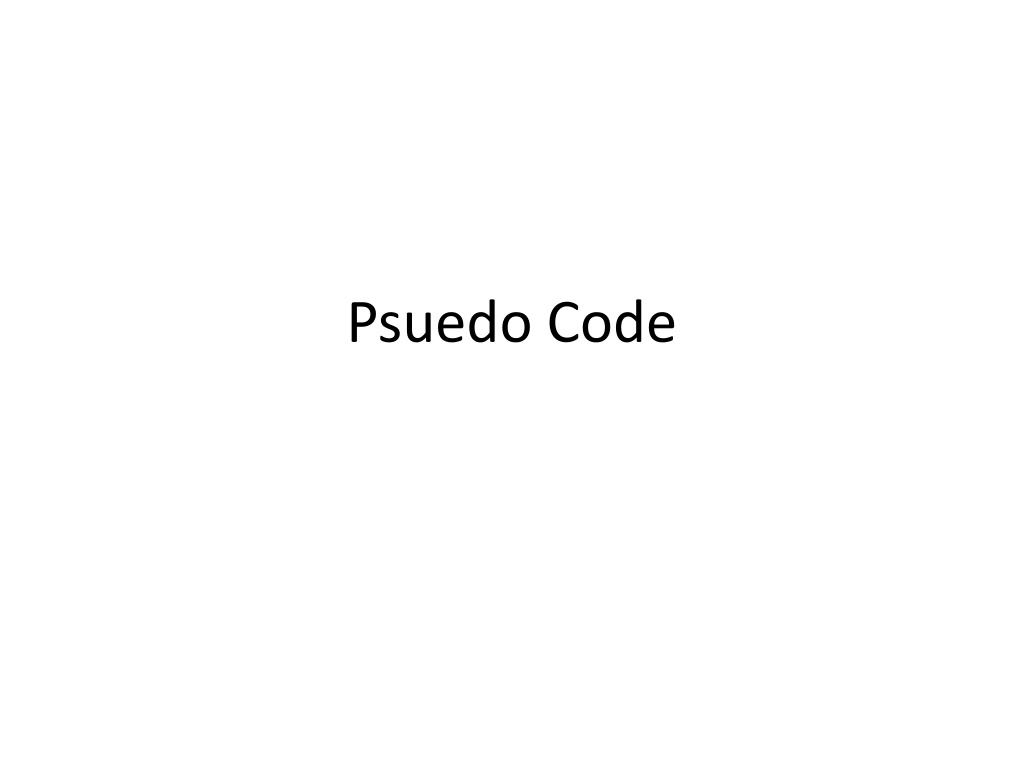

![[PDF⚡READ❤ONLINE] Zen Mind, Beginner's Mind: 50th Anniversary Edition](/thumb/20459/pdf-read-online-zen-mind-beginner-s-mind-50th-anniversary-edition.jpg)




